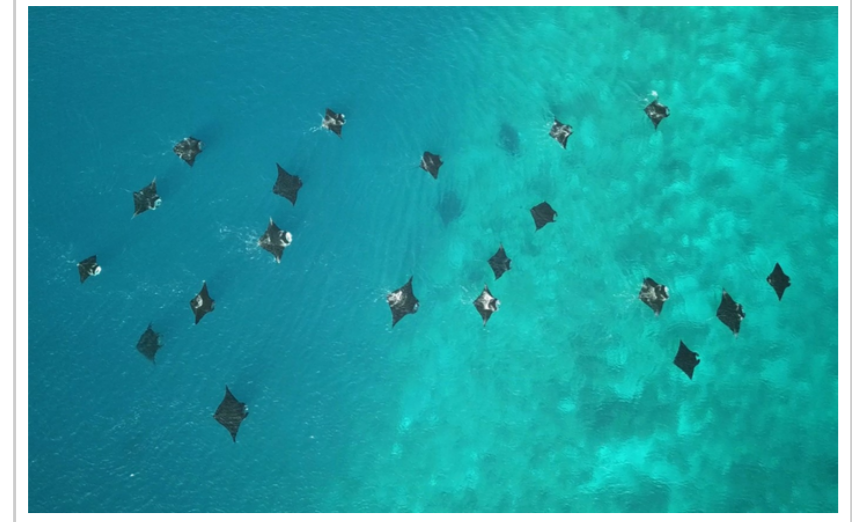November 18, 2022. By Sam Illingworth
Diamond discs
cut the waves,
spiralled fins
splitting surf
with graceful size
and measured ease.
Submerged,
shifted,
subdued.
Tracing histories
with photographs,
each exposure
a pinpoint;
patterns of life
against the safe
and unmolested seas.

This poem is inspired by recent research, which has found that reef manta rays are thriving off the Raja Ampat archipelago in Indonesia.
Reef manta rays are one of the largest ray species, with a wingspan of up to five metres. They are regularly seen on coastal and oceanic reefs, often pausing at cleaning stations or feeding in large aggregations. Their size and beauty make them a strong draw for tourists, but they face increasing exploitation from trade in their gill rakers and the International Union for Conservation of Nature’s ‘Red List’, lists reef manta ray as a ‘vulnerable’ species with declining populations throughout their range in the Indo-Pacific. Today, it is likely that there are less than 20,000 of these creatures in the wild, with the Maldives and Indonesia hosting the largest number.
One of the ways in which these rays can potentially be conserved is using well-enforced Marine Protected Areas (MPAs), a body of water with restricted human activity, intended to protect a natural or cultural resource.
In this new study, researchers made observations of reef manta rays off the coast of Raja Ampat, an archipelago located in Indonesia’s West Papua province.
By focussing on two of Raja Ampat’s largest MPAs, Dampier Strait and Southeast Misool, the researchers used sightings of rays, each individually identified by photograph, to assess population dynamics from 2009 to 2019. In Dampier Strait, the estimated population increased from 226 to 317 individuals during this time, while Southeast Misool’s population swelled from 210 to 511.
While conservation measures substantially reduced fishing pressures, another reason for the populations thriving was thought to be the El Niño Southern Oscillation climate cycle, which boosted plankton numbers and provided more opportunities for mating.
This research therefore highlights the importance of long-term conservation and management measures, such as well-enforced MPAs, for helping to protect and nurture vulnerable marine species.

